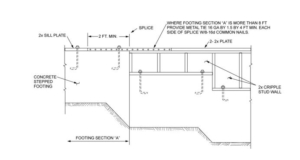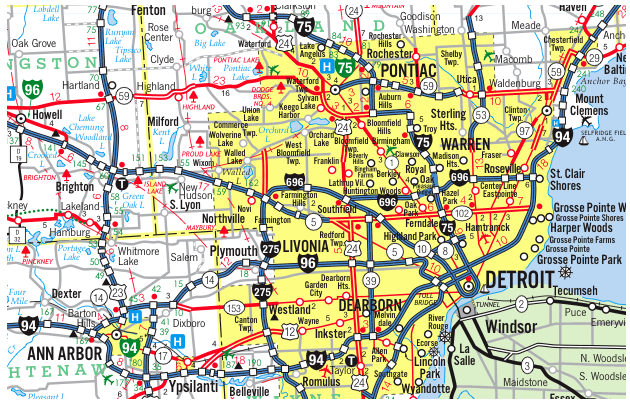Stepped Footing: When to Use and Its Advantages and Disadvantages
A stepped footing is a type of foundation commonly used in construction to support a building or structure. It consists of a series of horizontal sections or “steps” that step down in height to match the natural slope of the ground. This footing design helps distribute the weight of the structure evenly, especially when the site is sloped or uneven.
When to Use Stepped Footing
- Uneven Terrain or Sloped Sites
Stepped footings are typically employed when building on uneven or sloped land. This is because the steps accommodate changes in ground level, preventing the need for extensive excavation or costly leveling of the site. By stepping the footing down, the foundation can follow the natural contours of the land, ensuring the structure is stable. - Preventing Differential Settlement
In cases where the ground is not uniformly compact or where soil conditions vary significantly across the site, stepped footings help mitigate differential settlement. The gradual change in footing height ensures that the load is distributed more evenly, preventing one side of the structure from settling more than the other, which could lead to structural damage. - Heavy Load Support on Sloped Land
When constructing large or heavy buildings on sloped land, stepped footings provide extra stability by spreading the load over a larger surface area, reducing the risk of excessive stress on any single point of the foundation. - Compliance with Site Conditions
In areas where local regulations or environmental conditions require foundations to be built at different depths, stepped footings can provide a viable solution. They can adjust to varying frost depths, groundwater levels, or the presence of unstable soil layers, ensuring compliance with building codes.
Advantages of Stepped Footing
- Adaptability to Site Conditions
One of the biggest advantages of stepped footings is their ability to adapt to uneven terrain. Instead of requiring expensive site grading or excavation, they allow the builder to work with the natural topography of the land. - Cost-Effective Solution
Stepped footings can be more affordable than alternative foundation systems, especially on sloped land. By using the existing ground levels, there may be less need for costly earth-moving equipment or extensive foundation reinforcement. - Stability in Uneven or Poor Soil Conditions
Stepped footings can offer enhanced stability on uneven or weaker soils. The gradual steps help distribute the load over a broader area, preventing excessive pressure from being applied to one part of the foundation. - Reduced Risk of Foundation Cracks
By ensuring more even distribution of weight, stepped footings can minimize the chances of settlement issues that might lead to cracking or other forms of structural damage.
Disadvantages of Stepped Footing
- More Complex Construction Process
While stepped footings may seem straightforward, they require careful planning and precise construction. The footing steps must be accurate, and the transition between different levels must be properly executed to avoid any weaknesses in the foundation. The additional steps can also increase labor costs. - Potential for Uneven Load Distribution
If the design or construction is not executed correctly, there could be issues with uneven load distribution. Improperly stepped footings might cause more stress on certain parts of the foundation, leading to long-term settlement issues or even structural failure. - Increased Material Usage
The design of stepped footings can require more materials than a standard, continuous footing. Depending on the size of the steps and the depth of the foundation, this could increase the overall material cost of the project. - Aesthetic and Space Constraints
On some sites, stepped footings can create aesthetic concerns or reduce available space for other uses. The footings may cause a rise in ground level, impacting the landscape or limiting the ability to use the space surrounding the building.
Conclusion
Stepped footings provide a valuable solution for building on sloped or uneven land. When used properly, they offer significant advantages, including cost-effectiveness, stability, and adaptability to site conditions. However, their complexity and the potential for uneven load distribution require careful planning and skilled construction. By understanding the advantages and disadvantages, builders can make informed decisions about whether stepped footings are the right choice for a given project.



 Our Construction company is Servicing Southeast Michigan, Detroit and the Tri-County area Wyane, Oakland and Macomb;
Our Construction company is Servicing Southeast Michigan, Detroit and the Tri-County area Wyane, Oakland and Macomb;
